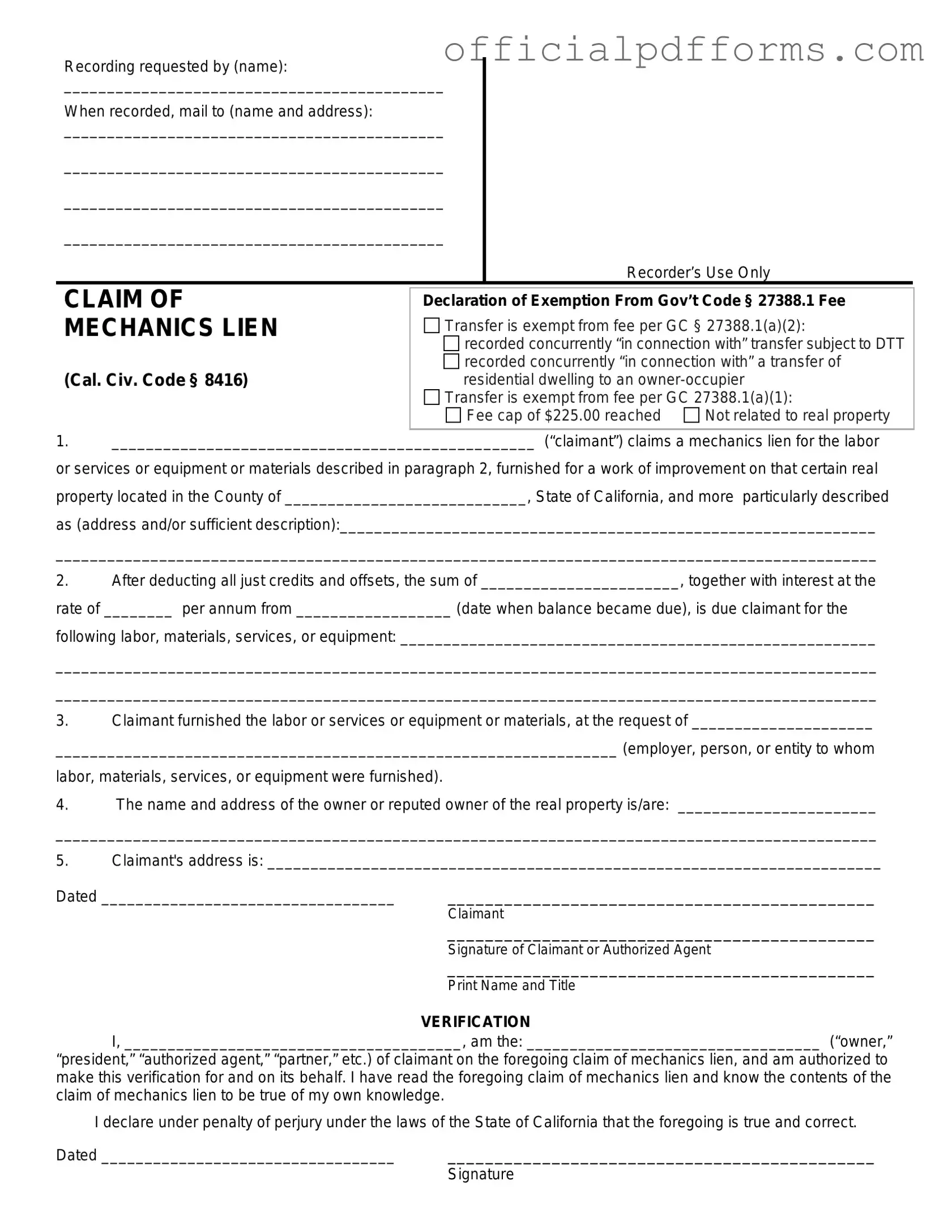What is a Mechanics Lien in California?
A Mechanics Lien is a legal claim against a property that ensures payment for labor, materials, or services provided during construction or improvement. It protects contractors, subcontractors, and suppliers by allowing them to seek payment through the property itself if they are not compensated for their work.
Who can file a Mechanics Lien in California?
Various parties involved in construction can file a Mechanics Lien, including:
-
General contractors
-
Subcontractors
-
Material suppliers
-
Laborers
Essentially, anyone who has contributed to the improvement of a property and has not received payment can file a lien.
To complete a Mechanics Lien form, you will need the following information:
-
The property owner's name and address
-
The property description, including the address
-
Your name and address as the claimant
-
A description of the work done or materials supplied
-
The amount owed
-
The date the work was completed or materials were provided
Providing accurate and complete information is crucial for the lien to be enforceable.
What is the deadline for filing a Mechanics Lien in California?
In California, you generally have 90 days from the completion of your work or delivery of materials to file a Mechanics Lien. However, if you are a subcontractor, you may need to serve a preliminary notice within 20 days of starting work to maintain your right to file a lien.
How do I file a Mechanics Lien?
To file a Mechanics Lien, follow these steps:
-
Complete the Mechanics Lien form with the required information.
-
Have the form notarized.
-
File the form with the county recorder's office where the property is located.
-
Serve a copy of the filed lien to the property owner.
Keep copies of all documents for your records.
What happens after I file a Mechanics Lien?
Once you file a Mechanics Lien, it becomes a public record. The property owner will receive a copy, and they may choose to pay the amount owed to have the lien removed. If payment is not made, you may need to take further legal action to enforce the lien, which could involve filing a lawsuit.
Can a Mechanics Lien be removed?
Yes, a Mechanics Lien can be removed in several ways:
-
If the debt is paid, the lien can be released.
-
A court may order the lien to be removed if it is found invalid.
-
The lien can be voluntarily withdrawn by the claimant.
It's important to ensure that the lien is properly released to avoid future complications.
What are the consequences of not filing a Mechanics Lien?
If you do not file a Mechanics Lien, you may lose your right to collect payment for your work or materials. Without this legal claim, you might have to pursue other, often more complicated, methods to recover the owed amount, such as filing a lawsuit.
Is legal assistance needed to file a Mechanics Lien?
While it is possible to file a Mechanics Lien on your own, seeking legal assistance can be beneficial. An attorney can help ensure that all requirements are met and that the lien is filed correctly, potentially saving you time and effort in the long run.
The Mechanics Lien form can typically be found on your county's recorder's office website or at their physical location. Additionally, various legal websites may offer downloadable forms and resources to help guide you through the process.
